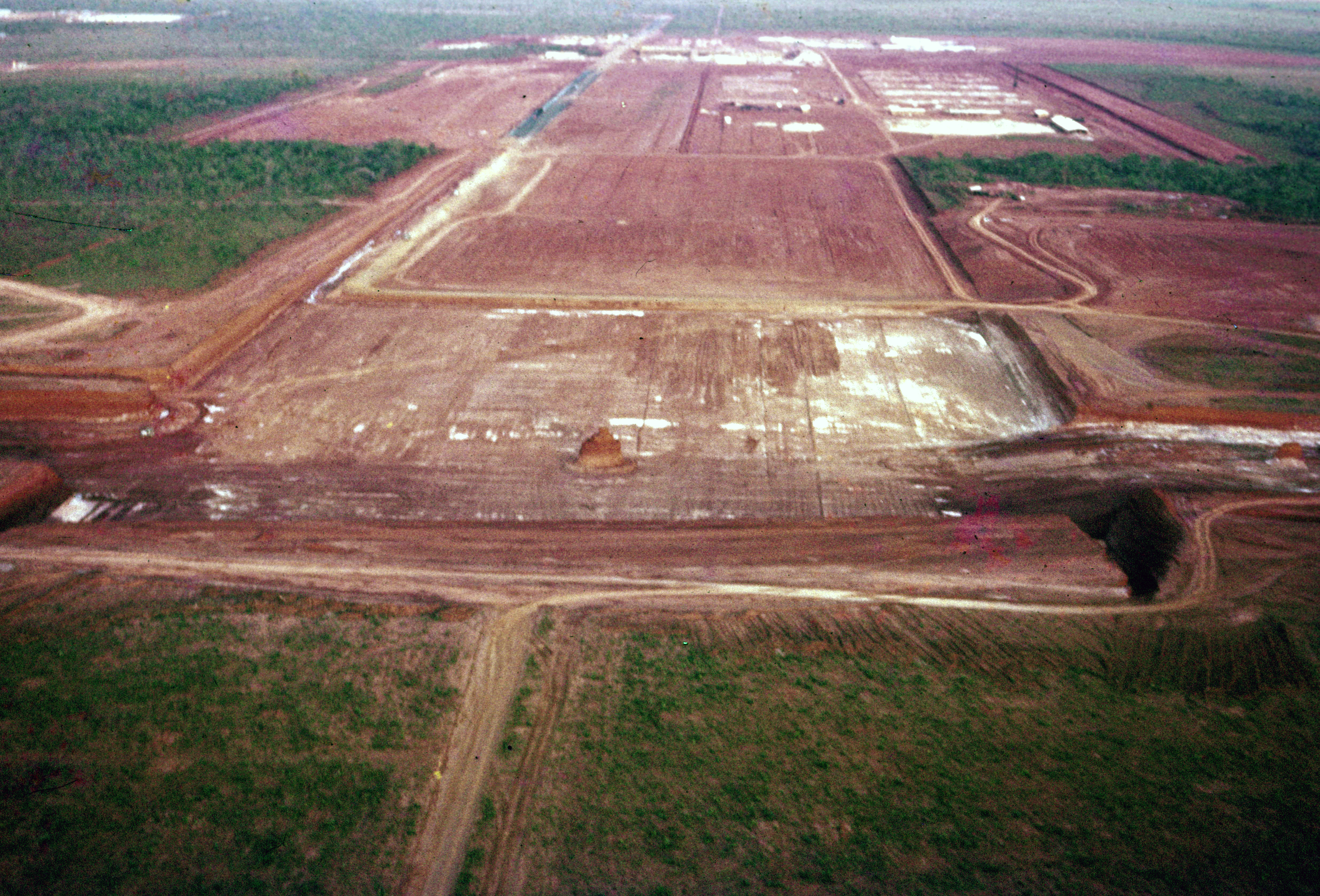
White buildings, Red Dust: Brasilia in Ektachrome Colour
##plugins.themes.immersion.article.figure##

Abstract
Brasília’s red dust is everywhere. Regularly tinting the white surfaces of Brasília’s modernist buildings red, a great effort of human labor is required every day to maintain their intended autonomy. Dust clouds first appeared in February 1957 due to massive earthworks and the clearing of the original landscape. While large tractors and caterpillars aggressively manipulated the ground following the forms of Lucio Costa’s Pilot Plan, a formless entropic dispersal of red soil microparticles filled the air. As the floating dust spread over Brasília’s construction site, it also filled the printed pages of newspapers and magazines.
This article intends to discuss how dust tainted the representation of Brasília. As modernist architecture confronted the landscape, dust introduced a distortion in the pure image of Brasília, threatening not only the whiteness of the upcoming architectures but also contaminating drawings, cameras, lenses, printed photographs, clothes and lungs. While most of the architectural black and white photos of Brasília tended to produce clean images, the introduction of the newest color film Ektachrome by photojournalists made earthworks and dust visible. Associated with grainy reproduction in illustrated magazines and speckles of dust in the negatives themselves, the images enhanced the perception of Brasília’s total environmental design.
If dust is, according to Richard Meyer, “an environment in miniature, a physical archive of our material surroundings,” this article analyzes how these fine particles of solid matter and their accidental reproduction, operated as visual dissonances that confuse the modern distinction between nature and culture.
Cover image: Mário Fontenelle, Clearing, c.a. 1958, Arquivo Público do Distrito Federal
References
- Azoulay, Ariella. Potential History: Unlearning Imperialism. London: Verso, 2019.
- Beal, Sophia. Brazil under Construction: Fiction and Public Works. New York: Palgrave Macmillan US, 2013.
- Bense, Max. Inteligência Brasileira: Uma Reflexão Cartesiana. Cosac Naify, 2009.
- Bertran, Paulo. História Da Terra e Do Homem No Planalto Central: Eco-História Do Distrito Federal. Editora UnB, 2011.
- Bishop, Elizabeth. “A New Capital, Aldous Huxley, And Some Indians.” The Yale Review 94, no. 3 (July 1, 2006): 76. https://doi.org/10.1111/j.1467-9736.2006.00213.x.
- Borden, Iain. “Imaging Architecture: The Uses of Photography in the Practice of Architectural History.” The Journal of Architecture 12, no. 1 (February 1, 2007): 57–77. https://doi.org/10.1080/13602360701217989.
- Carter, Paul. The Road to Botany Bay : An Exploration of Landscape and History. 1st University of Minnesota Press ed. Minneapolis: University of Minnesota Press, 2010.
- Costa, Lúcio. “Memória Descritiva do Plano Piloto, 1957.” In Registro de uma vivência, [2a ed.]. São Paulo: Empresa das
- Artes, 1997.
- ––––. “O Urbanista defende sua cidade, 1967.” In Registro de uma vivência, [2a ed.]. São Paulo: Empresa das Artes, 1997.
- Eauclaire, Sally. The New Color Photography. New York: Abbeville Press, Publ., 1981.
- Gamm, Brian. “A Color Correction Maskerade.” CMYK History (blog), November 28, 2020. https://cmykhistory.com/acolor-correction-maskerade/.
- Gorovitz, Matheus. Brasília, Uma Questão de Escala. São Paulo: Projeto, 1985.
- Korola, Katerina. “The Air of Objectivity: Albert Renger-Patzsch and the Photography of Industry.” Representations 157, no.1 (February 1, 2022): 90–114. https://doi.org/10.1525/rep.2022.157.5.90.
- Kubitschek, Juscelino. Por Que Construí Brasília. Rio de Janeiro: Bloch Editores, 1975.
- Latour, Bruno, and Catherine Porter. We Have Never Been Modern. Cambridge, Mass: Harvard University Press, 1993.
- Lebovics, Herman. “Malraux’s Mission.” The Wilson Quarterly (1976-) 21, no. 1 (1997): 78–87.
- Mammi, Lorenzo. “A Construção Da Sombra.” In As Construções de Brasília, edited by Heloisa Espada. São Paulo: Instituto Moreira Salles, 2010.
- Nicolau, Drei. Depoimento - Programa de História Oral, 1990. Arquivo Público do Distrito Federal.
- Niemeyer, Oscar. As curvas do tempo: memórias. Rio de Janeiro: Revan, 1998.
- Pedrosa, Mário. “Reflexões Em Torno Da Nova Capital.” In Acadêmicos e Modernos, edited by Otília Arantes. EDUSP, 2004.
- Penna, José Osvaldo de Meira. Depoimento - Programa de História Oral, 1990. Arquivo Público do Distrito Federal.
- Puttkammer, Wolf Jesco Von. Depoimento - Programa de História Oral, 1990. Arquivo Público do Distrito Federal.
- Ross, Kristin. Fast Cars, Clean Bodies: Decolonization and the Reordering of French Culture. An October Book. Cambridge, Mass: The MIT Press, 1996.
- Sontag, Susan. On Photography. 3rd printing. New York : Farrar, Straus and Giroux, 1978.
- Stoppani, Teresa. “Dust Revolutions. Dust, Informe, Architecture (Notes for a Reading of Dust in Bataille).” The Journal of Architecture 12, no. 4 (September 1, 2007): 437–47. https://doi.org/10.1080/13602360701614714.
- Troutman, Anne, and Linda Hart. “The Photographic Suppression of Reality: Re-Presenting Brasilia,” 1998. https://www. acsa-arch.org/chapter/the-photographic-suppression-of-reality-re-presenting-brasilia/.
- Wagner, Anselm. “The Bauhaus and the Vacuum Cleaner.” In Dust & Data : Traces of the Bauhaus across 100 Years, edited by Ines Weizman, Leipzig: Spector Books, 2019.
- Zettel, Jayme. Depoimento - Programa de História oral, 1989. Brasília, Arquivo Público do Distrito Federal.